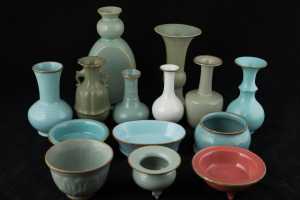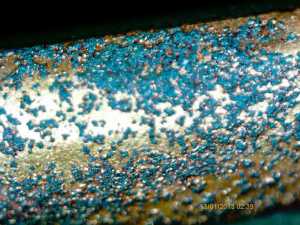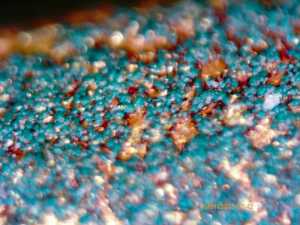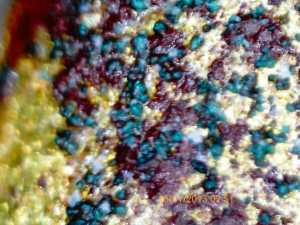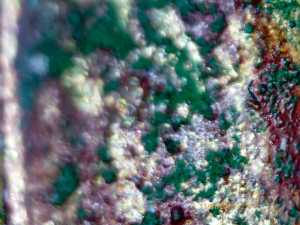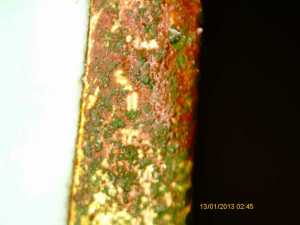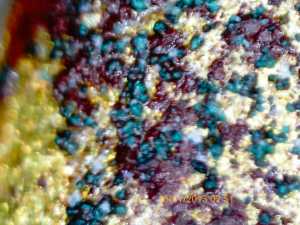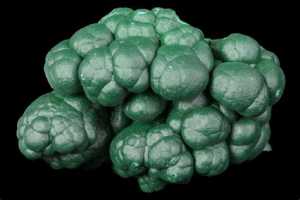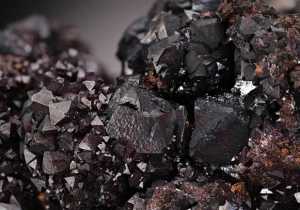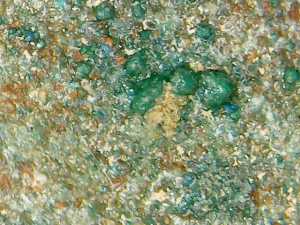The Chinese and Asian Art Forum. For Fans, Collectors and Dealers.
 Basic Rules For the BidAmount Asian Art Forum: Talk about whatever you want. You can even discuss and offer things that are for sale if they are authentic. Maximum image file size per post is 2 MB. Images of 700pxl x 700pxl are optimal if saved at a medium resolution. Be respectful of others and enjoy yourself. Click the YouTube link for a brief tutorial on using the forum. You can also EMBED Videos by cutting and pasting from You-Tube, Vimeo etc.
Basic Rules For the BidAmount Asian Art Forum: Talk about whatever you want. You can even discuss and offer things that are for sale if they are authentic. Maximum image file size per post is 2 MB. Images of 700pxl x 700pxl are optimal if saved at a medium resolution. Be respectful of others and enjoy yourself. Click the YouTube link for a brief tutorial on using the forum. You can also EMBED Videos by cutting and pasting from You-Tube, Vimeo etc.
NOTE: To post an item or add a new post, click open the category title from the FORUM LIST, and CLICK the Blue ADD TOPIC button.
Don't be concerned Darling, Let them answer the one question I asked of them it's simple!
Well,
I can see there's been a spirited discussion on the topic of glazes and authenticity. I thought I'd add my two bits on the topic.
1. Regarding the Getty Conservation Inst. book by David Scott VIEW and Read The BOOK HERE
"From the book, Copper and bronze in art by David Scott The existence of malachite formation over a layer of cuprite is supported by analytical and metallographic studies is a good indication of the authenticity of an artifact.) "
First, Mr. Scott is not talking about ceramics, but specifically about Metals, specifically Copper and Bronzes. Further, he is discussing Layers of natural metallurgic oxidization over time. He is talking about the metal TRANSITIONING over very long periods of time from metal>Cuprite>Malachite, he is not talking about the presence of Copper base minerals present in ceramic glazes, which can be bought today from numerous supply houses.
The full content of the above quote from Mr. Scott spoke specifically to Bronzes and Metals over time and has been used out of context here to argue the authenticity of a ceramic glaze.
Here is the SECTION from this 500 page plus book. Yes, I have read most of it.... a great sleeping pill but good content if you're interested in Ancient metals.
________________________________________________________
Malachite in bronze patinas
Although malachite is only a minor constituent of patinas that
develop on exposed bronze objects, it can be a significant component of patinas that develop during the corrosion of copper alloys buried in the soil, where
the first product to form adjacent to the metal is cuprite; malachite usually forms over this initial cuprite layer. The uniform growth of this corrosion accounts for the attractive patina seen
on many bronze antiquities.
The natural transition of metal to cuprite to malachite is very difficult to replicate in the
laboratory. In fact, most of the recipes for producing artificial green patinas on copper alloys,
such as those compiled by Hughes and Rowe (1982), do not result in malachite formation over
a cuprite layer. Consequently, the existence of this type of corrosion, supported by analytical
and metallographic studies, is a good indication of the authenticity of an artefact.
_________________________________________________________
2. The alleged CABAL, sorry this is a silly canard and on its face is absurd. Many, many, many rare things from obscure sources turn up at auction houses all over the world including Bonhams, Sotheby's, and Christie's, and are sold for significant sums ( millions) annually. Things get sold at rural auction houses for modest sums and get resold at larger firms for hefty profits as they have a broader market all the time. The idea that Museum curators, scientists, archaeologists are all cowed by three auction houses into submission is just silly rubbish. I've known many from all of the above categories. Healthy debates between all of them happen in the Asian and other areas of art all the time. Nobody is controlling anyone in some kind of a massive Cabal or conspiracy to regulate the market.
_________________________________________________________
I hope this helps...
Best Peter
Peter
Hi Mark and JT,
I've been watching the thread for a while and have been hesitant to jump on as "the obvious" is just so "obvious" as you guys and gals have pointed out.
The debate is not really a debate at all, but a misguided pendantic attempt to ignore reality by inserting nonrelevant data to make a supportive point to validate a prejudicial view. The elephant in the room that's being ignored by the owner is a simple $500 TL test done at Oxford is all that's needed here. Other places do them, however for a small side fee, many will give you any data you wish to accompany your objects. So only Oxford should be used reliably.
We're the owner truly convinced of the age of these examples, a TL test would have been long ago since been done. He would in turn would have sold the finest porcelain collection of great rarities in the history of Asian Art collecting and pocketed over a billion dollars. Alas, that has not happened and the reason why is obvious.
It is amusing though.
Best to you Mark and everyone here!
Peter
Peter
Hello Everyone,
New to posting to the forum, but have been a reader for years. I remember a few years ago coming across his Ru ware videos and being (at the time) a complete newcomer to the field of Chinese porcelain immediately laughed at the absurdity of his videos. He lost me at conspiracy, but I agree with everyone that it is sad he is the first result when looking for Ru ware information on YouTube.
Anyway, I just wanted to mention that even to a complete newbie like me his videos came across as ridiculous.
All the best,
Justin
Hi, Peter
Thank You Peter for making my point! I was not at all speaking about the ceramic glaze. I was speaking about the metal bands that are made of copper and are fire gilded on top of the copper bands and these bands were placed around the Rim and base and sometimes only the rim on certain Imperial Ru ware. So you can see this I'll attach some photos so you will know exactly what I'm speaking about
These are closeup photos of some of these fire-gilded copper bands that are around the rims of certain Imperial Ru Ware Pieces.
Regards,
Joseph Sharon
www.chinesemasterpieces.com
There are many issues, but I just wanted to say that your use of the metal bands to authenticate your pieces is the only thing you think you have going for you, but it assumes the blue and red material is both cuprite and malachite.
It's "the uniform growth of this corrosion [that] accounts for the attractive patina seen on many bronze antiquities." David A. Scott, Copper and Bronze in Art: Corrosion, Colorants, Conservation 123 (2002) (emphasis added). In my opinion, I see no uniformity of the growth. Also curious that there's such a polished new surface on this growth that is supposed to be uniform.
Further, malachite's color is a pale green, id. at 102, with crystal faces often striated, with sharp internal and external angles, id. at 105. Your photos speak for themselves against you here, so I won't linger. I suggest you view the image plates, particularly plate 20 on page 183 of the book to see a real example of this.
Also, you provide the quote "the existence of malachite formation over a layer of cuprite is supported by analytical and metallographic studies is a good indication of the authenticity of an artifact" from Scott to fit your point. However, Scott clearly states that "the existence of this type of corrosion, supported by analytical and metallographic studies, is a good indication of the authenticity of an artifact." Id. at 106. I don't know in what language a comma magically transforms to the word "is," but it follows plainly that the mere existence of this type of corrosion in addition to analytical and metallographic studies would be a good indication of the authenticity of the artifact, and that without such studies on the artifact, it is not a good indication of the authenticity of the artifact. I'd love to see the analytical and metallographic studies on your pieces confirming that it is indeed bronze under cuprite under malachite that you so claim.
I'd say that you would benefit from joining a community that has similar passion for Asian art, where we can all learn from each other, but it seems you've already made that step in the right direction by paying your monthly dues to this wonderful forum.
Also, thank you @plcombs for that free book link. I've been looking for a resource on bronzes, as I'm completely new to the area, and I found it incredibly interesting and informative.
Kindly,
John
My point on the glazes was only that despite being new, after firing under magnification you will find malachite and copper deposit crystals. It requires no time at all to get them started, same for copper. It's a given that copper alone or even with gilding on it will oxidize and grow assorted crystals within a matter of months to a year or so.
Crystals Versus Layers
I am afraid you're confusing layers via TRANSITION to PATINA with crystal formation patinas.
One is transforming Copper/Bronze to malachite layers over time. You have simple crystals that can form on copper or bronze in a matter of months.
Gilt copper for example results in a porous surface under the gold which can also begin creating these crystals under normal atmospheric conditions in a matter of months. They will then grow on the surface over the gold just as your heavily magnified images show. Those are not layers, but crystal growths.
I have seen hundreds of fakes of "Shang" style bronzes with red cuprite and greed malachite crystals all over them, they have been induced chemically and they just sit on the surface. It can be done in a matter of days.
As an aside, the bronze portholes on my boat have tiny bits of red cuprite and Malachite patination/crystals all over them by the end of each season, despite being polished each spring. We had copper gutters added to a house years ago, shiny as gold when put up, but were covered with patina within one year near the ocean.
Look, instead of continuing your deeply confused amateur chemistry angle, take your best piece and have it TL tested at OXFORD, they can take the sample here in the US at a number of locations and send it for you. It's just that simple.
If you're not willing to do that after all these years of flogging these pieces around it's because you know the answer. The pieces are not old, as you've been told by many folks for many years.
If you just want to argue, you'll never get anywhere on this. It's all so ridiculous.
Peter
Nice collection from eBay & Alibaba 🤣 🤣 🤣 Mark, just give up!
By the way Trump won the election! 😉
www.Wyssemaria-Art.com
[email protected]
Instagram: @wyssemaria_art
(From the book Copper and bronze in art by David Scott The existence of malachite formation over a layer of cuprite is supported by analytical and metallographic studies is a good indication of the authenticity of an artifact.)
Peter, I can't understand Why it's so hard for you to see the truth. click enlarge the first photo and Look closely at it You can clearly see the formations of malachite over a layer of reddish cuprite crystals. (The first photo on left is a close of the copper gilded band) (The middle photo is of a malachite formation) (The last photo shows a Cuprite Crystal Formation)
I'm not out to ruin you, all I'm working for is a free open art market for all people. I will not take any piece to Oxford for TL testing until they clean up the testing and stop cheating people that are using them. I hope you didn't tell 100 people with Shang bronzes that showed what David Scott wrote about I don't believe you know more than him.
Joseph Sharon
www.ChineseMasterpieces.com
Attached is am image off of a bronze laying around here thats less than 10 years old with an induced surface. Both Cuprite and Malachite crystals are both just minor ores of Copper or Copper oxide. The appear on modern copper pipes and objects all the time and are not an indication of anything other than having been exposed to hard water, salts, environment etc.
OK, so stop spinning the research paper by Mr. Scott to fit your argument, its silly.
Ask any plumber how often he see this happen each week. Here's an excerpt from an article about the problem and whats on your copper rims. I've seen identical formations on our boats plumbing for years. .
Pitting corrosion of copper in water has been categorized into at least three types based on water chemistry and physical features: cold-water (Type I) [2, 8–10], hot-water (Type II) [11], and soft-water (Type III) [12]. Soft-water copper pits are described as being relatively wide and shallow and consisting of an exterior layer of bronchantite [Cu4(SO4)(OH)6] and/or malachite [Cu2(CO3)(OH)2] over a layer of crystalline red-brown cuprite [Cu2O] and the corroding copper surface. The voluminous corrosion deposits of the exterior layer are released to the water and can potentially cause water blockage. Waters having low conductivity, low alkalinity, and relatively high pH are typically associated with soft-water pitting.
https://link.springer.com/article/10.1007/s11668-014-9786-6
Your theory is just hogwash.
As for your refusal to have an Oxford test done, it is equally ridiculous.
If they are not accurate you might consider why the following museums use them regularly for dating purposes.
The Ashmolean Museum, Oxford; The British Museum, The Victoria and Albert Museum, National Museums and Galleries, Liverpool; National Museums of Scotland, Edinburgh; Merseyside Maritime Museum, Liverpool; Allard Pierson Museum, Amsterdam; Musee Barbier-Muller, Geneva; Museum Rietberg, Zurich; Musee d’Art et d’Histoire, Geneva; Modena Museum, Italy, Asian Art Museum, San Francisco; Baltimore Museum of Art, Museum of Fine Arts, Boston; Brooklyn Museum of Art, Cincinnati Art Museum, Cleveland Museum, California Museum of Ancient Art, Museum of Fine Arts, Houston; Los Angeles County Museum of Art, The Metropolitan Museum of Art, The New Orleans Museum, Milwaukee Public Museum, Harvard University Art Museums, Indianapolis Museum of Art, Isabella Gardner Museum, The Freer Gallery, Washington; The Arthur M. Sackler Foundation, Philadelphia Museum of Art, National Gallery of Canada, Ottawa; The Art Institute of Chicago, The Saint Louis Art Museum, Missouri; Winterthur, Delaware; Royal Ontario Museum, Toronto; The George R Gardiner Museum, Toronto; National Gallery of Art, Washington.
or I suppose you know much more than all of these institutions do? Of course, you don't, you've got a pile of repros, with no provenance that can be bought on eBay, and Alibaba 24/7/365.
So let's just call it a day, you've wasted a lot of time and hopefully not too much money, you've been had.
Your theory is a bizarre mixing of "Apples and Oranges", call and talk to any high school chemistry teacher, he can easily grow the crystals on your piece in a day or so with simple household ingredients. Or go check your copper pipes.
Peter
I can't believe Your Gall, Where did you get that photo put the picture up of the whole piece.
Thanks for visiting "The BidAmount Asian Art Forum | Chinese Art"
If you sell on eBay, or have a shop feel free to post images and descriptions and links.
Check back often for discussion about the latest news in the Chinese art and antique world. Also find out about the latest Asian art auctions at Sotheby's, Christie's, Bonhams and Tajans.
Auction results for: fine porcelain, ceramics, bronze, jade, textiles and scholar's objects. As well as Japanese, Thai, Vietnamese and other Asian cultures.
Thank you,
Peter Combs
Topics and categories on The BidAmount Asian Art Forum | Chinese Art
Kangxi vases, Kangxi dishes and chargers, Kangxi ritual pieces, Kangxi scholar's objects, Qianlong famille rose, Qianlong enamels, Qianlong period paintings, Qianlong Emporer's court, Fine porcelain of the Yongzheng period. Chinese imperial art, Ming porcelain including Jiajing, Wanli, Xuande, Chenghua as well as Ming jades and bronzes.
The BidAmount Asian Art Forum | Chinese Art
A free Asian art discussion board and Asian art message board for dealers and collectors of art and antiques from China, Japan, Korea, Thailand, Cambodia, Vietnam and the rest of Asia. Linked to all of the BidAmount Asian art reference areas, with videos from plcombs Asian Art and Bidamount on YouTube. Sign up also for the weekly BidAmount newsletter and catalogs of active eBay listing of Chinese porcelain, bronze, jades, robes, and paintings.
The art of calligraphy - and for the ancient Chinese it certainly was an art - aimed to demonstrate superior control and skill using brush and ink. Calligraphy established itself as one of the major Chinese art forms during the Han dynasty (206 BCE - 220 CE), and for two millennia after, all educated men were expected to be proficient at it.
The Museum’s collections of Asian art span nearly five millennia and encompass the cultures of China, the Himalayas, India, Japan, Korea, and Southeast Asia. In 2007, the Museum launched an initiative to create dedicated galleries for the collection, beginning with a gallery for the arts of Korea ...
Chinese art is full of symbolism, in that artists typically seek to depict some aspect of a totality of which they are intuitively aware.
China Online Museum is the finest online museum of Chinese art. It features Chinese calligraphy, painting, ceramics, bronzes, carving, and other artworks.
Chinese Ceramics & Works of Art. Overview Upcoming auctions Contacts Auction results ... Christie’s sales of Chinese ceramics and works of art showcase centuries of Chinese history. Held throughout the year in London, New York, Paris and Hong Kong, they attract a wide audience of collectors and connoisseurs vying for pieces as diverse as ...
Explore Asian Art Week. Contact the Specialist Department. Chinese Paintings ... Senior Specialist, Head of Sale. [email protected]. Tel:+1 212 641 5760. Bid in-person or online for the upcoming auction:Fine Chinese Paintings on 10 September 2019 at New York. Bid in-person or online for the upcoming auction:Fine Chinese Paintings on 10 ...
Discover an abundance of must-see art from all corners of a vast continent at Christie’s NY Asian Art Week. From contemporary classical and Chinese paintings to works with exemplary provenance from the Art Institute of Chicago, our Rockefeller Paza galleries will be full of ancient treasures and contemporary masterworks in a salute to the vibrant arts of Asia.
Sold to benefit The Art Institute of Chicago’s Asian Art Acquisition Fund, the sale features 84 lots with a focus on Ming and Qing porcelains, and offers a rare insight into the taste for collecting Chinese ceramics and works of art in the Midwest from the end of the 19th century through the 1980s. Highlights include two Wanli wucai garlic-head vases, a Qianlong mark and period, blue and ...
Specialist, Chinese Paintings, Christie's London Dr Malcolm McNeill is a Specialist in Chinese Paintings at Christie’s, based in London. He previously worked as an assistant curator of the Chinese collections and the Victoria and Albert Museum in London, as a researcher at the British Museum, and as a translator and tour guide at the National Palace Museum in Taipei.
The Christie's Education 2020 Conference: The Chinese Art Market 18 Jun 2019 Christie’s Education is delighted to announce our first international academic conference in Asia which will take place in Hong Kong from 26-27 November 2020 at the Hong Kong Convention and Exhibition Centre and will run in parallel with Christie’s Hong Kong Autumn Auctions.
The summer Chinese Art sale in Hong Kong will feature works of art from several private collections, including Qing porcelains and textile from the collection of the legendary Chinese art dealer A. W. Bahr (1877–1959), fine gilt bronze Buddhist sculptures from an old Hong Kong collection, an East Asian collection of Qing dynasty wine cups and jades, and a Japanese collection of Song ceramics ...
Sotheby's Chinese Works of Art Department holds two auctions each year in London, New York, Hong Kong and Paris.
Chinese Art - View Auction details, bid, buy and collect the various artworks at Sothebys Art Auction House.
With more than 340 Chinese works of art dating from the Neolithic to the Republic periods, highlights of this sale include a selection of Qing Imperial monochromes from the collection of Arnold and Blema Steinberg, early ceramics from the Art Institute of Chicago and Chinese porcelain and works of art from the collection of Henry Arnhold.
Results: Sotheby's Asia Week achieved $52.4 million in six strong auctions, exceeding pre-sale estimates. With 76.5% of lots sold and 60.3% of lots surpassing high estimates, the Asian art sales at Sotheby's indicate continued collector interest in the finest works of art from China, India and and the Himalayas.
Today's sale of Important Chinese Art will proceed as planned with sessions at 10 AM and 2 PM EDT. Sotheby's will be monitoring the weather conditions throughout the day and will be available to coordinate alternative bidding options should conditions make it difficult for clients to attend the auction in person.
Bonhams Chinese Art department is renowned for offering the finest works of art representing the richness and breadth of China's artistic heritage, particularly Imperial porcelain, white and spinach green jades, cloisonné and Buddhist art. Specialised international auctions are held globally, including London, Hong Kong and San Francisco.
Bonhams : Chinese Works of Art We use cookies to remember choices you make on functionality and personal features to enhance your experience to our site. By continuing to use our site you consent to the use of cookies. Please refer to our privacy and cookie policies for more information.
Bonhams Fine Art Auctioneers & Valuers: auctioneers of art, pictures, collectables and motor cars. We use cookies to remember choices you make on functionality and personal features to enhance your experience to our site. By continuing to use our site you consent to the use of cookies. ... Chinese Art (US) General enquiries
Bonhams : Fine Chinese Art We use cookies to remember choices you make on functionality and personal features to enhance your experience to our site. By continuing to use our site you consent to the use of cookies. Please refer to our privacy and cookie policies for more information.
Bonhams Fine Art Auctioneers & Valuers: auctioneers of art, pictures, collectables and motor cars Bonhams : Asian Art We use cookies to remember choices you make on functionality and personal features to enhance your experience to our site.
Bonhams are international auctioneers of fine Chinese and Japanese art. We specialise in rare Imperial and Export Chinese ceramics and works of art, as well as Japanese ceramics, fine and decorative works of art from the Neolithic Period to the 20th century. View on map
Bonhams Fine Art Auctioneers & Valuers: auctioneers of art, pictures, collectables and motor cars. We use cookies to remember choices you make on functionality and personal features to enhance your experience to our site. By continuing to use our site you consent to the use of cookies. ... Asian Art Bonhams. Work. 22 Queen St.

